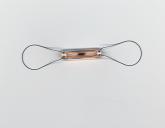Also, as of October, Medicare covers the device implantation procedure under a new-technology add-on. Large private insurers are expected to follow suit. A reimbursable procedure is something of a rarity for heart failure specialists, although surgeons and general cardiologists can readily perform the implantation as well, according to Dr. Adamson.
Although for now the device is indicated in patients with NYHA class III heart failure, consideration is now being given to a possible extension of the indication to patients with class II disease as well. That’s largely because of an analysis of Medicare data led by Dr. Adamson that showed that nationally, patients with class II or III heart failure averaged a 24.7% 30-day hospital readmission rate as compared to an 18.5% rate among Medicare participants in CHAMPION.
Asked about patient acceptance of the monitoring program, Dr. Abraham said it was excellent in CHAMPION.
“In the trial, we asked patients to take a measurement daily, and on average, we got measurements on 6 out of 7 days,” he noted.
That high adherence rate came as no surprise to Sara Paul, a registered nurse who serves as director of the heart function clinic at Catawba Valley Medical Center in Conover, N.C.
“I think when patients find something that makes them feel better, they’re going to do it. I’m actually a little more concerned about the opposite: the patient who decides to freely partake of salty, fatty foods like pizza and hot dogs, because they know you’re going to be watching them and taking care of them. That’s my concern,” she said.
Under the medication adjustment protocols used in CHAMPION, the initial presumption was that elevated pressures were due to volume overload, so the first step was a simple increase in diuretic therapy. Many patients responded to that, according to Dr. Abraham. If not, the second-line maneuver was to add or increase a nitrate vasodilator on the presumption that the elevated pressures were most likely related to a change in venous capacitance.
Ms. Paul stressed one major caveat regarding pulmonary artery pressure–guided therapy via remote hemodynamic monitoring: The device itself is not directly therapeutic.
“This is not a device that administers treatment. So if you’re going to put this device in a patient, you’d better use the information,” she said.
Dr. Adamson and Dr. Abraham reported receiving speakers honoraria from St. Jude Medical, which markets the CardioMEMS system, as well as serving as consultants to numerous other health care companies. Ms. Paul reported having no financial conflicts.
